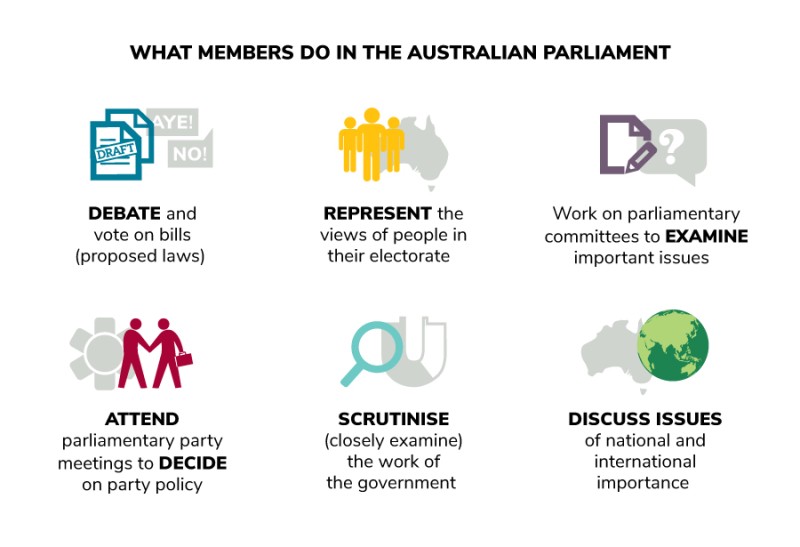Why do you often see just a few members sitting in the chambers?
You might see just a few members of parliament sitting in the Senate or House of Representatives because it is not necessary for all members to be there while debates are taking place. With the exception of Question Time, senators and members are rarely all present at the same time in the Senate or House. This is because much of their work takes place outside of the houses of parliament. When Parliament is in session, members of parliament are generally free to come and go throughout the day.
Senators and members usually attend the Senate or House to:
- start the sitting day and be recorded as present
- participate during Question Time
- give a speech or make a statement
- vote in a division.
If they have left the Senate or House, they usually stay in Parliament House but continue to work in another part of the building. They might be:
- preparing speeches
- researching issues
- attending committee or party meetings
- meeting people from their electorate, state or territory and dealing with matters on their behalf
- contributing to debates in the Federation Chamber (if they are a member of the House of Representatives)
- holding a press conference and speaking with the media.
They are still able to follow what is happening in the Senate and House on televisions in their offices and on the internet. Their staff will also keep up to date with what is currently being discussed and follow the Notice Paper – the daily schedule.
There are rules that require a minimum number of senators and members to attend meetings. This is called a ‘quorum.’ The President of the Senate or Speaker of the House of Representatives will only ask for a quorum if a senator or member asks them to. The work of Parliament can continue without a quorum.
What members do in the Australian Parliament

Parliamentary Education Office (peo.gov.au)
Description
Members of the House of Representatives:
- debate and vote on bills – proposed laws
- represent the views of people in their electorate
- work on parliamentary committees to examine important issues
- attend parliamentary party meetings to decide on party policy
- scrutinise – closely examine –the work of the government
- discuss issues of national and international importance.
This work is licensed under a Creative Commons Attribution-NonCommercial-NoDerivs 3.0 Unported License.
You are free to share – to copy, distribute and transmit the work.
Attribution – you must attribute the work in the manner specified by the author or licensor (but not in any way that suggests that they endorse you or your use of the work).
Non-commercial – you may not use this work for commercial purposes.
No derivative works – you may not alter, transform, or build upon this work.
Waiver – any of the above conditions can be waived if you get permission from the copyright holder.
